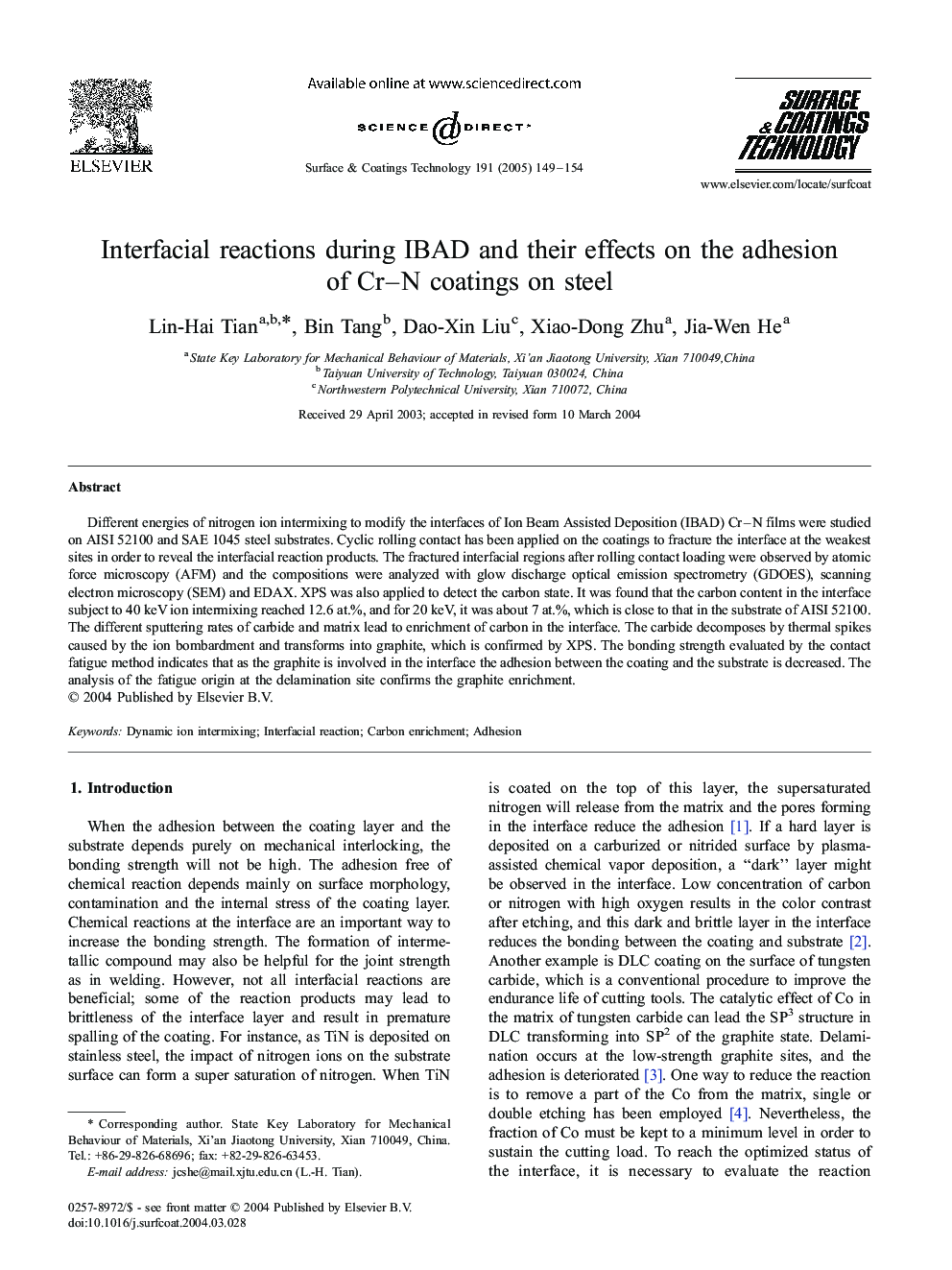| Article ID | Journal | Published Year | Pages | File Type |
|---|---|---|---|---|
| 9809906 | Surface and Coatings Technology | 2005 | 6 Pages |
Abstract
Different energies of nitrogen ion intermixing to modify the interfaces of Ion Beam Assisted Deposition (IBAD) Cr-N films were studied on AISI 52100 and SAE 1045 steel substrates. Cyclic rolling contact has been applied on the coatings to fracture the interface at the weakest sites in order to reveal the interfacial reaction products. The fractured interfacial regions after rolling contact loading were observed by atomic force microscopy (AFM) and the compositions were analyzed with glow discharge optical emission spectrometry (GDOES), scanning electron microscopy (SEM) and EDAX. XPS was also applied to detect the carbon state. It was found that the carbon content in the interface subject to 40 keV ion intermixing reached 12.6 at.%, and for 20 keV, it was about 7 at.%, which is close to that in the substrate of AISI 52100. The different sputtering rates of carbide and matrix lead to enrichment of carbon in the interface. The carbide decomposes by thermal spikes caused by the ion bombardment and transforms into graphite, which is confirmed by XPS. The bonding strength evaluated by the contact fatigue method indicates that as the graphite is involved in the interface the adhesion between the coating and the substrate is decreased. The analysis of the fatigue origin at the delamination site confirms the graphite enrichment.
Related Topics
Physical Sciences and Engineering
Materials Science
Nanotechnology
Authors
Lin-Hai Tian, Bin Tang, Dao-Xin Liu, Xiao-Dong Zhu, Jia-Wen He,
